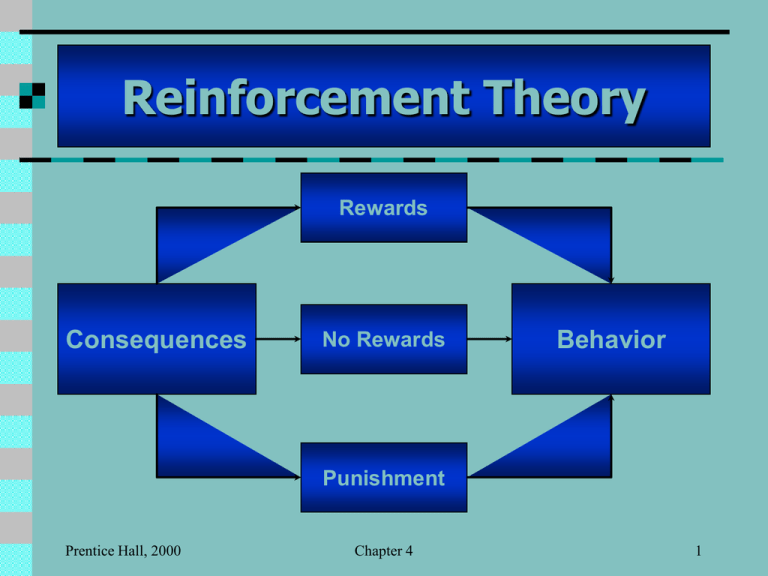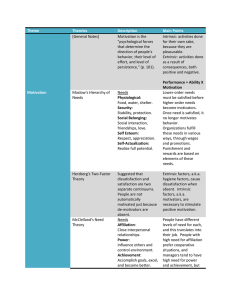
Reinforcement Theory
Rewards
Consequences
No Rewards
Behavior
Punishment
Prentice Hall, 2000
Chapter 4
1
Shaping
Reinforcing small approximations of the
final desired behavior
Copyright © 2000 by Harcourt, Inc.
All rights reserved.
Schedules of Reinforcement
Used when reinforcement is partial
Fixed Schedule: Amount of time/number
of behaviors is specified in advance
Variable Schedule: Amount of
time/number of behaviors vary
Copyright © 2000 by Harcourt, Inc.
All rights reserved.
Ratio Schedules of Reinforcement
Fixed Ratio: reinforcement after a fixed
number of responses; e.g. a piece-rate pay
scheme
Variable Ratio: reinforcement after a
variable number of desired responses; e.g.
cash bonuses, public recognition, occasional
awards for good performance
Variable ratio schedule is most resistant to
extinction
Copyright © 2000 by Harcourt, Inc.
All rights reserved.
Maintaining Desired Behaviors
Extinction: when a response ceases to
occur due to the removal of
reinforcement
Establish desired responses before reducing
reinforcement
Reduce reinforcement gradually using ratio
schedule to prolong behavior
Copyright © 2000 by Harcourt, Inc.
All rights reserved.
Choose Appropriate
Reinforcers
Use differential rewarding
Reward according to performance
Identify valued rewards for each individual
Copyright © 2000 by Harcourt, Inc.
All rights reserved.
Applying Behavior
Modification
Behavior Modification increases in
success if:
Rewards offered are substantial and desired
Rewards are administered intermittently
Higher levels of performance lead to
proportionally larger increases in rewards
Copyright © 2000 by Harcourt, Inc.
All rights reserved.
The Five-Step Problem Solving Model of OB MOD
1
Identify Performance-Related
Behavioral Events
2
Measure: Baseline Frequency
of Response
3
Identify Existing
Behavioral Contingencies
NO
4a Develop
Problem
Solved?
Intervention Strategy
Yes
4b
Apply Appropriate Strategy
4c
Measure: Chart Frequency of
Response After Intervention
Prentice Hall, 2000
Chapter 5
4d
Measure: Chart Frequency
of Response After Intervention
5
Measure: Chart Frequency
of Response After Intervention
8







